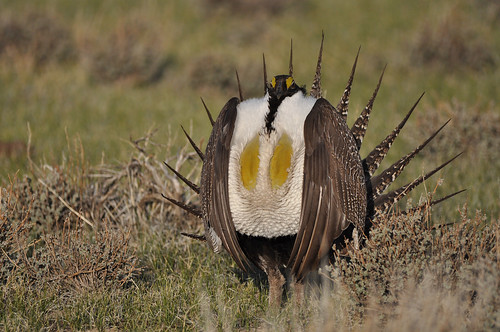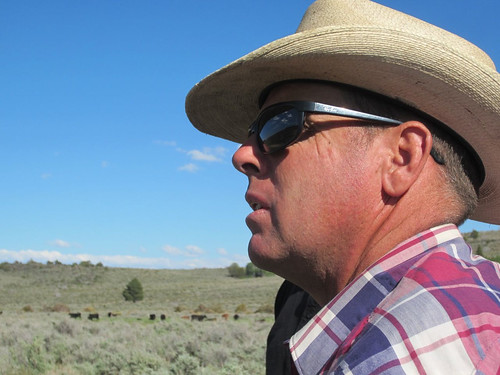
Aldo Leopold once said, “Conservation will ultimately boil down to rewarding the private landowner who conserves the public interest.” Those words are powerful, especially in the West, where ranchers are partnering up to benefit sage grouse and the 350 other species that share its vast habitat.
Today, the Sand County Foundation, a non-profit organization named for Leopold’s signature book, “A Sand County Almanac,” released a report showcasing the dedication of private landowners in conserving this at-risk species that is currently being considered for listing under the Endangered Species Act.
The foundation’s “Stories from the Range” report highlights the stewardship of ranchers, who are working with local, state and federal partners, have restored and protected 4.4 million acres of prime sage grouse habitat – an area of working lands the size of two Yellowstone National Parks.
The Sage Grouse Initiative (SGI), a partnership led by USDA’s Natural Resources Conservation Service (NRCS), has been the driving force in private lands conservation efforts for sage grouse. That’s because big and intact sagebrush grazing lands are also good habitat for sage grouse. It’s a win-win effort benefiting the bird and the rural ways of life that sustain these landscapes.
Through SGI, NRCS provides landowners with technical and financial assistance to make conservation improvements, in a way “rewarding” them for their stewardship. This partnership helps remove invading conifers, protects key lands through easements and makes other rangeland improvements that lead to healthier sage grouse habitat. Since 2010, SGI has collectively invested more than $420 million in on-the-ground habitat improvements.
The report – through its stories of stewardship-minded ranchers – highlights how and why these conservation efforts are so successful.

John O’Keefe, who grazes cattle on his land and nearby public lands in southeast Oregon, has worked through SGI to remove invading conifers that jeopardize the quality of habitat for sage grouse and forage for cattle. But the trees aren’t removed at random. Targeted conservation work focuses on the younger trees that are creeping into sagebrush habitat, where efforts can have the biggest positive outcome.
Andy Taft, who raises sheep on Parker Mountain in Utah, is no stranger to sage grouse, having watched them all of his life. And he knows that sage grouse serve as an indicator of a healthy range: more sage grouse means better forage for his herd. That’s why he has worked cooperatively for years to actively manage and enhance the sagebrush habitat to ensure it’s as productive as possible for both. His efforts are now paying dividends with a steady increase of sage grouse and the highest chick survival rate in history, recorded by researchers at Utah State.
Finally, Fred Fulstone, part of several generations who have etched out a living raising livestock in Nevada’s picturesque Smith Valley, proves that agriculture and wildlife can thrive together. His ranch also demonstrates that conservation doesn’t only benefit sage grouse and the rancher, but a whole host of other wildlife, like mule deer and pronghorn.
Collectively, the work these ranchers have done through SGI demonstrates the benefits and potential of private lands conservation. By prioritizing conservation, ranchers like O’Keefe, Taft and Fulstone are boosting their land’s productivity, providing wildlife habitat and demonstrating the vital role that private lands play in conservation.
Learn more about the “Stories from the Range” report and the Sage Grouse Initiative.
